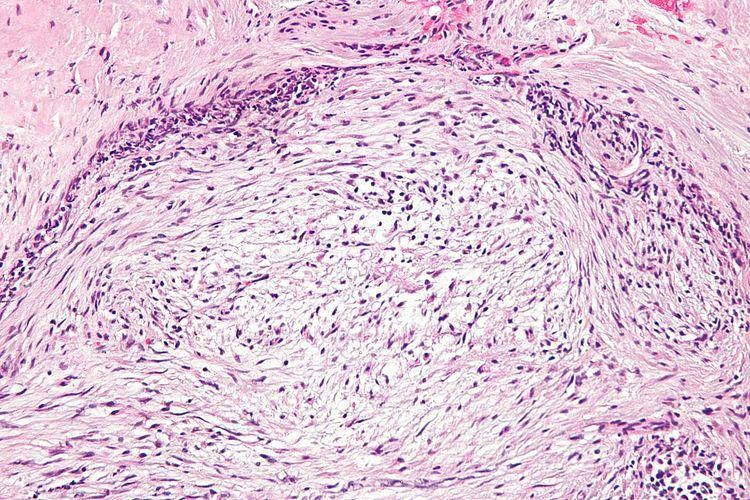Specialty rheumatology ICD-9-CM 728.79 | ICD-10 M72.4 | |
 | ||
Nodular fasciitis, also known as nodular pseudosarcomatous fasciits, pseudosarcomatous fasciitis, and subcutaneous pseudosarcomatous fibromatosis, is a benign soft tissue lesion most commonly found in the superficial fascia. The lesion commonly occurs in the first three decades of life. Upper extremities and trunk are the most common affected anatomical sites. Previous history of trauma may be present. Clinically and histologically, nodular fasciitis may be mistaken for a sarcoma.
Contents
Cause and clinical course
Until recently, nodular fasciitis have been considered a reactive process of uncertain cause. However, recent findings indicate that nodular fasciitis is a self-limited clonal neoplastic process (see below). Clinically, nodular fasciitis presents as a subcutaneous "growth" over a period of 3–6 weeks that eventually regresses. The lesion usually reaches a size of 2–3 cm. Larger lesions are unusual. Local recurrence has been described after simple surgical excision but it is rare.
